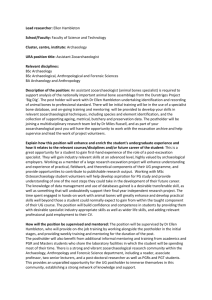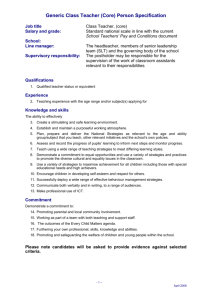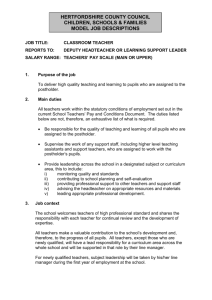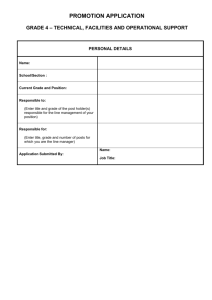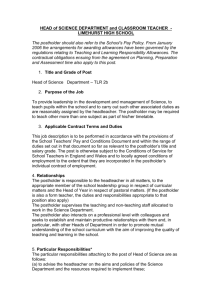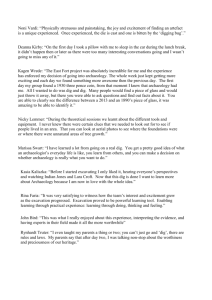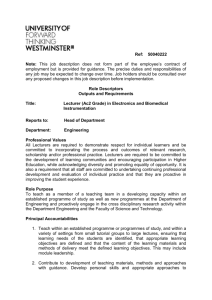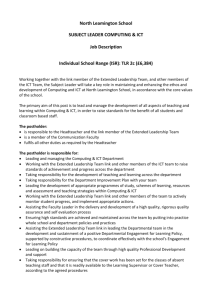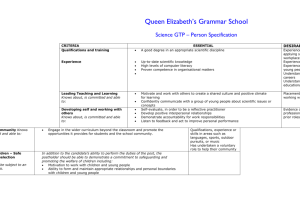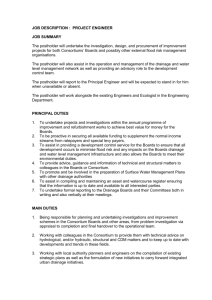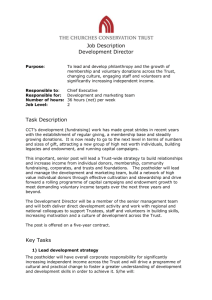Assistant Zooarchaeologist
advertisement
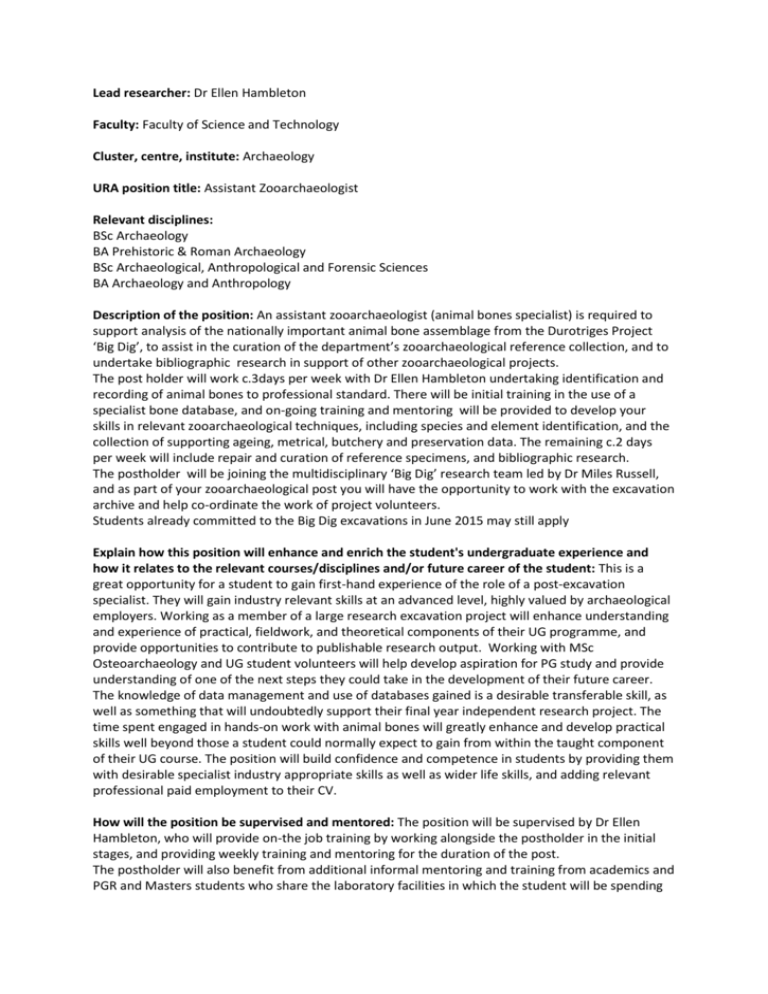
Lead researcher: Dr Ellen Hambleton Faculty: Faculty of Science and Technology Cluster, centre, institute: Archaeology URA position title: Assistant Zooarchaeologist Relevant disciplines: BSc Archaeology BA Prehistoric & Roman Archaeology BSc Archaeological, Anthropological and Forensic Sciences BA Archaeology and Anthropology Description of the position: An assistant zooarchaeologist (animal bones specialist) is required to support analysis of the nationally important animal bone assemblage from the Durotriges Project ‘Big Dig’, to assist in the curation of the department’s zooarchaeological reference collection, and to undertake bibliographic research in support of other zooarchaeological projects. The post holder will work c.3days per week with Dr Ellen Hambleton undertaking identification and recording of animal bones to professional standard. There will be initial training in the use of a specialist bone database, and on-going training and mentoring will be provided to develop your skills in relevant zooarchaeological techniques, including species and element identification, and the collection of supporting ageing, metrical, butchery and preservation data. The remaining c.2 days per week will include repair and curation of reference specimens, and bibliographic research. The postholder will be joining the multidisciplinary ‘Big Dig’ research team led by Dr Miles Russell, and as part of your zooarchaeological post you will have the opportunity to work with the excavation archive and help co-ordinate the work of project volunteers. Students already committed to the Big Dig excavations in June 2015 may still apply Explain how this position will enhance and enrich the student's undergraduate experience and how it relates to the relevant courses/disciplines and/or future career of the student: This is a great opportunity for a student to gain first-hand experience of the role of a post-excavation specialist. They will gain industry relevant skills at an advanced level, highly valued by archaeological employers. Working as a member of a large research excavation project will enhance understanding and experience of practical, fieldwork, and theoretical components of their UG programme, and provide opportunities to contribute to publishable research output. Working with MSc Osteoarchaeology and UG student volunteers will help develop aspiration for PG study and provide understanding of one of the next steps they could take in the development of their future career. The knowledge of data management and use of databases gained is a desirable transferable skill, as well as something that will undoubtedly support their final year independent research project. The time spent engaged in hands-on work with animal bones will greatly enhance and develop practical skills well beyond those a student could normally expect to gain from within the taught component of their UG course. The position will build confidence and competence in students by providing them with desirable specialist industry appropriate skills as well as wider life skills, and adding relevant professional paid employment to their CV. How will the position be supervised and mentored: The position will be supervised by Dr Ellen Hambleton, who will provide on-the job training by working alongside the postholder in the initial stages, and providing weekly training and mentoring for the duration of the post. The postholder will also benefit from additional informal mentoring and training from academics and PGR and Masters students who share the laboratory facilities in which the student will be spending most of their time. There is a strong and vibrant zooarchaeological research community within the Archaeology, Anthropology and Forensic Science department, including a reader, associate professor, two senior lecturers, and a post-doctoral researcher as well as PGRs and PGT students. This provides an unparalled opportunity for the UG postholder to immerse themselves in this community, establishing a strong network of knowledge and support. Similarly, the postholder will also have informal training opportunities with other members of the Durotriges Project team to support their work on the excavation contextual archive. The postholder will have opportunities to widen their portfolio of experience as they will be invited to engage in any outreach activities that take place while they are in post. List of duties and responsibilities of the position: The post holder will be required to work closely with their academic supervisor to assist in the identification of animal bones, and to take responsibility for their subsequent detailed recording to a professional standard on an MSAccess database. The post holder will be expected to learn and develop their zooarchaeological skills over time and be able to increase their level of independent working as they progress. The postholder will be required to help curate the animal bone reference collection – this will include cleaning, repairing and organising of specimens. One of the responsibilities of the postholder will be to take a leading role in the recruitment and coordination of a team of PGT and UG volunteers to support the processing of animal bones and other artefacts. Additional duties will include supporting bibliographic research in support of new projects, and working with the existing Durotriges project contextual archive, requiring them to become familiar with the on-site paper recording scheme, and use of digital archives of excavation plans and photographs. List the position qualifications including any special requirements (be specific): Knowledge of animal and/or human skeletal anatomy and is essential (for example, students should have undertaken taught units that include hands-on experience of working with skeletal remains. Relevant experience gained on external courses or work placements will also be accepted). Some knowledge of and experience working with MS Access databases is desirable (but not essential, as training will be provided), Some knowledge of or experience working with excavation contextual records and paper archives.
